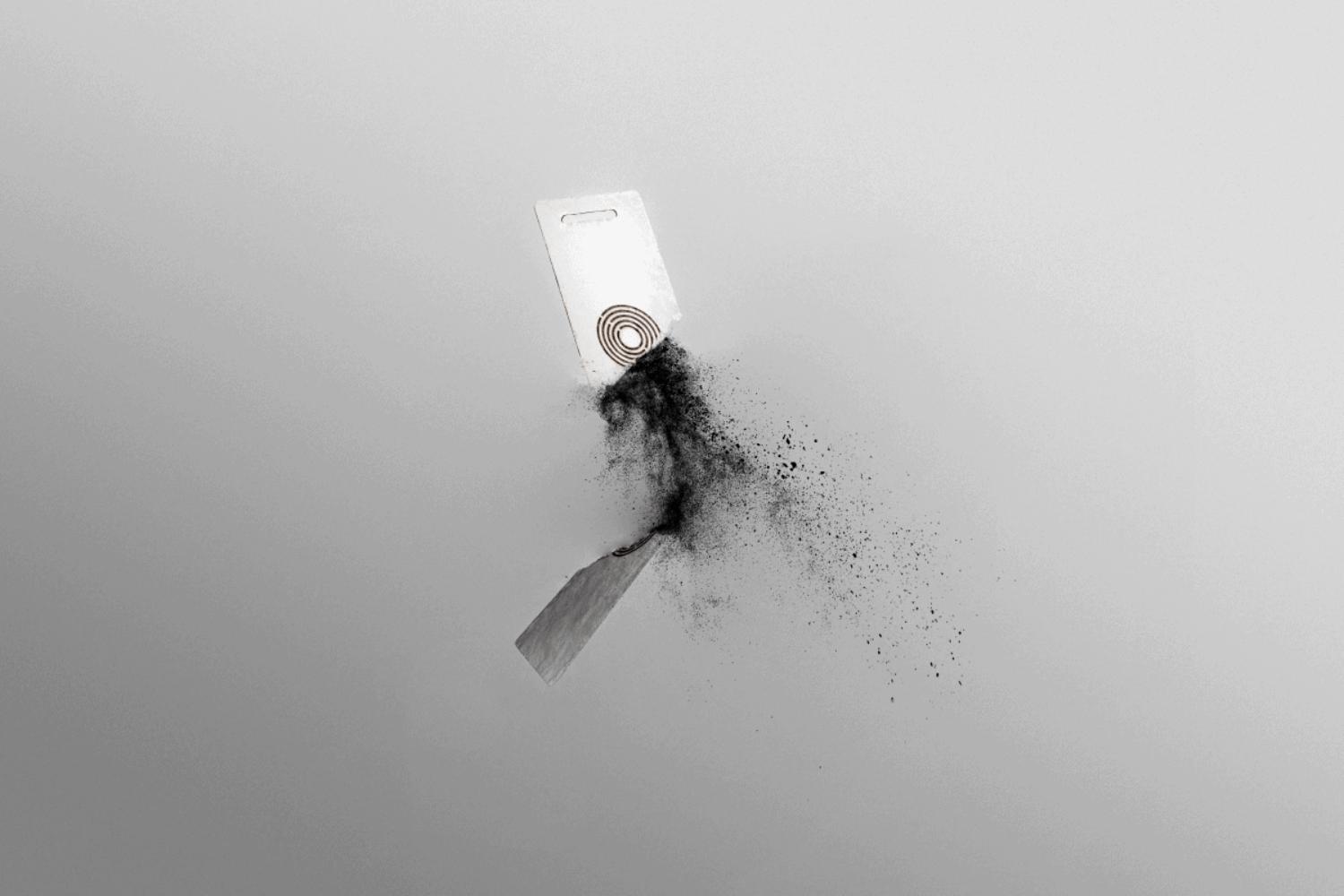The Green Alley Award celebrated its 10th anniversary in April – and this year’s winner sums up the blend of innovation and imagination that epitomises the very best in circular economy startups
Security tags in supermarkets, festival wristbands, hotel room key cards, parcels and packages … a whole host of components in supply chains of everything from cars to clothes. What do they have in common? RFID tags.
Every RFID (Radio Frequency Identification) tag contains a computer chip and a tiny metal strip of an antenna. A cool 18bn of these are made – and disposed of – each year. And with demands for product traceability increasing, ironically in part because of concerns for the social and environmental health of the supply chain, that’s set to soar.
And guess where most of these tags end up? Yup, landfill – adding to the burgeoning volumes of e-waste polluting our soils, rivers and skies. It’s a sorry tale, but it’s one in which two young graduates of Imperial College London are putting a great big green twist. Under the name of PulpaTronics, Chloe So and Soma Biro reckon they’ve hit on a beguilingly simple sounding solution: make the tags out of paper. No plastic, no chips, no metal strips. Just paper, pure and … simple … ? Well, not quite, as we shall see.

From left to right, Jan Patrick Schulz, CEO of Landbell Group and creator of the Green Alley Award, Soma Biro – CTO at PulpaTronics – and Chloe So, the startup’s CEO. Image: Green Alley Award
The apparent simplicity is achieved by some pretty cutting-edge technical innovation, aimed at stripping away both the metal antennae and the chips. If you can get rid of those, as Soma explains, you solve the e-waste problem at a stroke. But getting rid of things isn’t the typical approach to technical solutions, he adds. “I read a paper in Nature that set out how humans have a bias for solving problems through addition – by adding something new, rather than removing complexity, even if that’s the best approach.”
And adding stuff to a world already stuffed, as it were, can create more problems than it solves. “So that became one of the guiding principles of PulpaTronics”, he says: stripping things down “to the bare minimum, where they are still functional, but have as low an environmental impact as possible”.
It’s a passion that Hungarian-born Biro, PulaTronics’ CTO, shares with co-founder and CEO, So. Growing up in Hong Kong and then spending time in the US, she worked in a venture capital accelerator for a few years and developed “a fascination for using waste materials to create new products”. One of her first inspirations was actually a previous Green Alley Award winner, Aeropowder, which scooped the prize in 2018 for using chicken feathers to create thermal packaging. “When I found out what they were doing, I was like: ‘Whoa! That is so cool!’”.
E-waste is such a big issue, but it’s also so unseen. It’s not like a plastic bag
So speaks at the speed of innovation, her words tumbling over themselves with an infectious enthusiasm. Biro, by contrast, is measured, precise. They make a good pair. They met on their first day at Imperial’s celebrated Innovation Design Engineering double master’s programme, which is run jointly with the Royal College of Art. PulpaTronics started as a piece of project work, where they focused on the small matter of “material and technology-based solutions that can reduce the human impact on the planet”. Delving into research papers, exploring possible applications of nascent tech, says So, they narrowed their search down to “something that is biodegradable, and has to do with electronics … E-waste is such a big issue, but it’s also so unseen. It’s not like a plastic bag.” Zeroing in on RFID tags was a way of bringing it to light, she explains.
But just how did they achieve this magical simplification? The answer lies in lasers: these turn the paper into a conductive material, Biro explains, printing a pattern on the surface that can be ‘read’ by a scanner, rather like a QR code. It sounds like frontier technology, but it works, and PulpaTronics have patents pending to protect it.
The resulting tag comes in two forms: in one, there is still a microchip, so that it can be read by existing scanners of the sort common within retailers, for example. The more advanced version does away with the chip altogether. This will need a different kind of scanner, currently in development, which PulpaTronics envisages issuing licences for others to manufacture.

More than 18bn single-use RFID tags are made each year. PulpaTronics’ paper-based version eliminates metal and streamlines recycling. Image: PulpaTronics
Crucially, the cost of both versions is significantly cheaper than existing RFID kit – making this a highly viable proposition. Then there are the carbon savings: up to 70% for the chipless version – so a no-brainer from a sustainability viewpoint too. All the same, industry interest was slow to start with but when PulpaTronics won a coveted Dezeen magazine award in late 2023, it snowballed, says So. Big brands such as UPS, DHL, Marks & Spencer and Coca-Cola came calling. “We were just bombarded.” Brands were fascinated by the innovation, she says, but even more by the price point, “because, like any business, the knew that green products can’t come with a premium”.
Now So and Biro are deep in every startup’s familiar flurry of fundraising and tech development – but buoyed by the waves of enthusiasm their work has created, not least among the judging panel of the Green Alley Award. Its chair, Landbell CEO Jan Patrick Schulz, praised their “future-proof solution”, describing PulpaTronics as “a true pioneer”.
And like all pioneers, they’re not standing still. “We’re looking to expand across materials”, says So. “We started with paper, but it could be bioplastics next.” But one thing won’t change, she insists, and that’s their commitment to sustainability. “Throughout, we want to make sure that whatever we do, we’re doing it right.”
Main image: PulpaTronics

